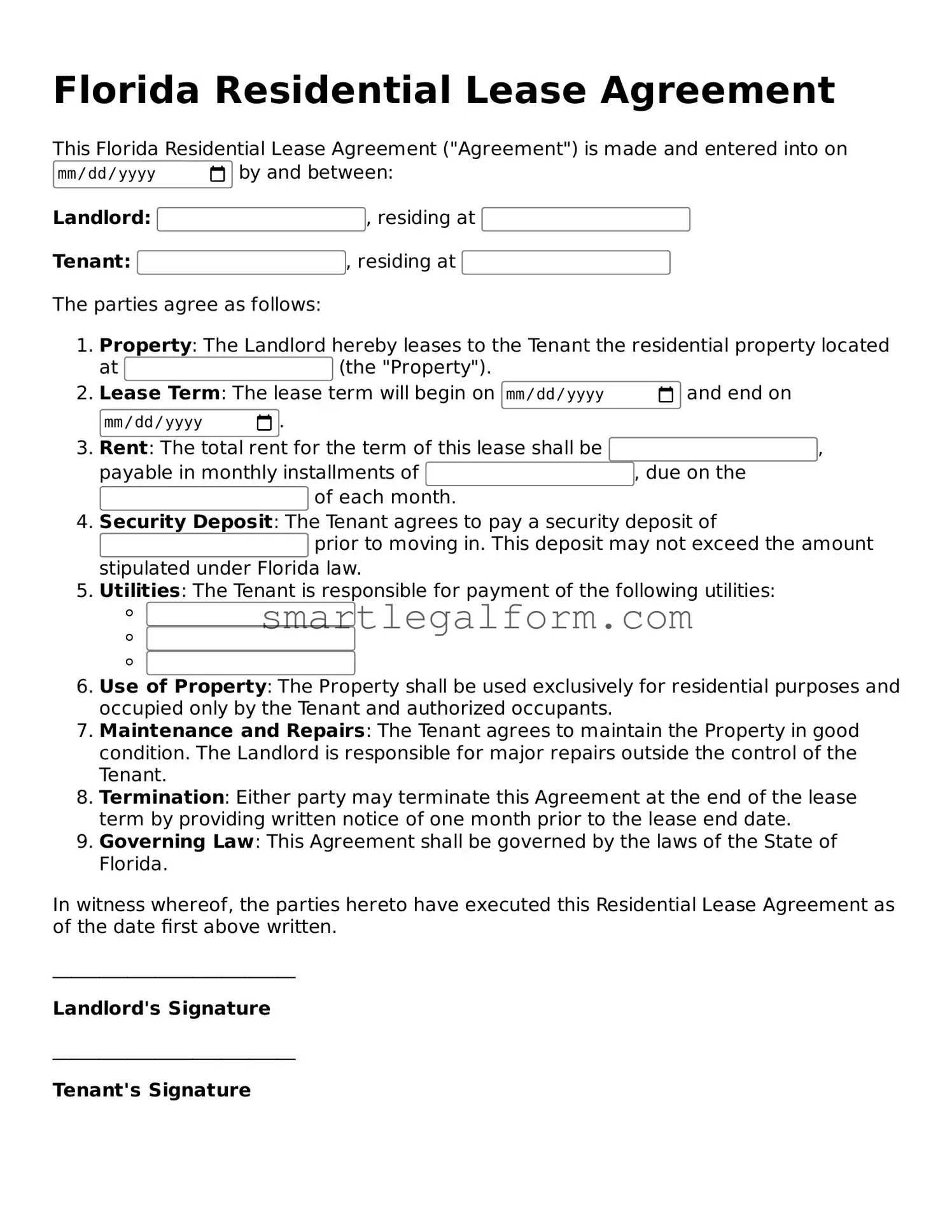Printable Florida Residential Lease Agreement Document
The Florida Residential Lease Agreement is a legally binding contract between a landlord and tenant that outlines the terms of renting a residential property. This form ensures that both parties understand their rights and responsibilities, fostering a clear and respectful rental relationship. To get started on your lease agreement, fill out the form by clicking the button below.
Fill Out Your Form Online
